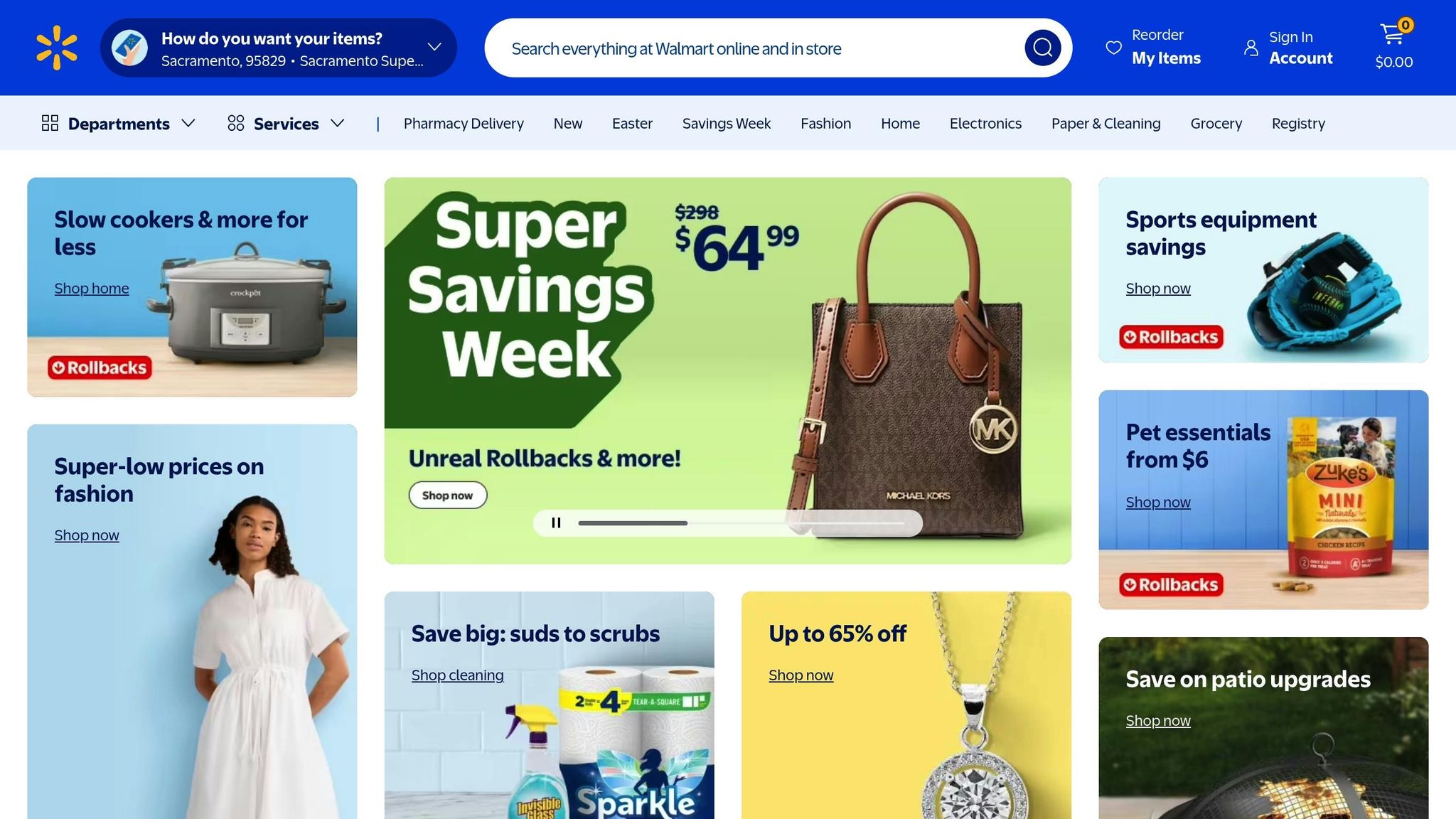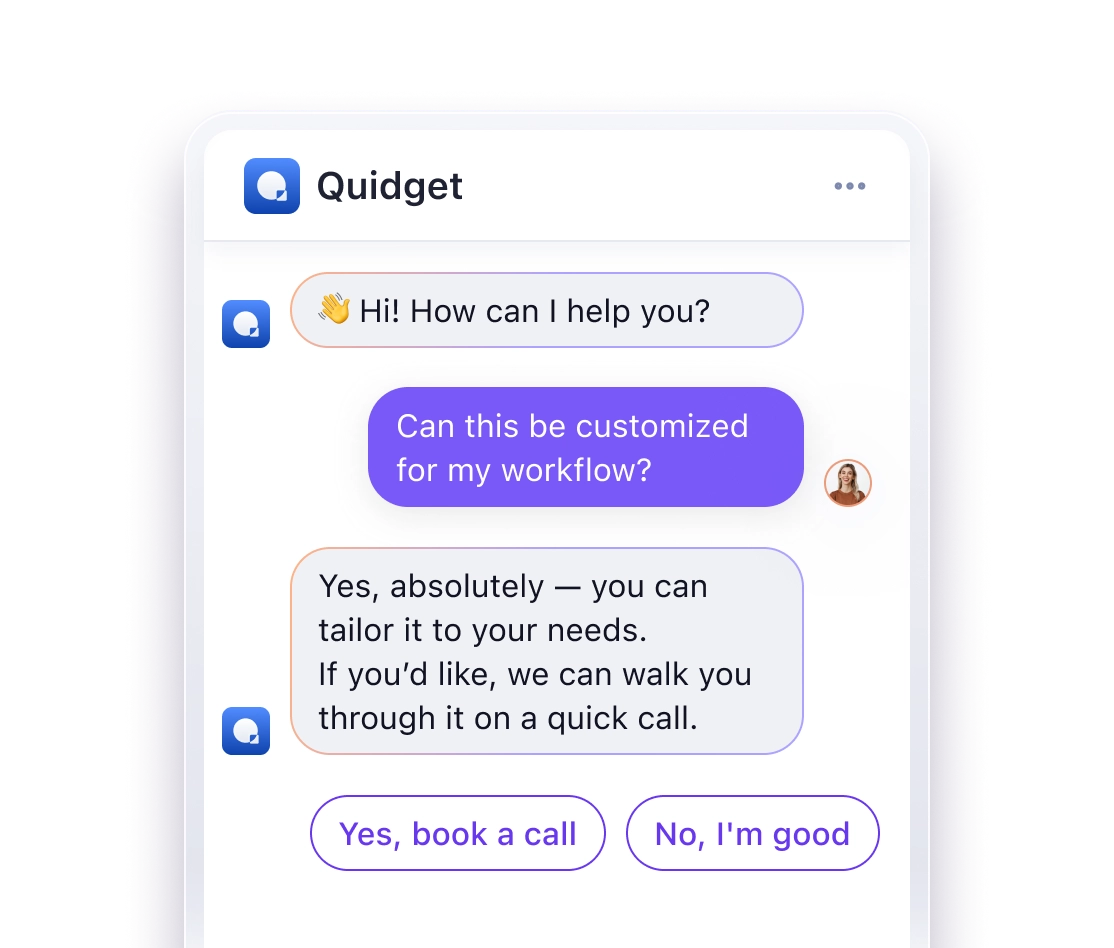Best Retail Chatbots: How AI is Changing Shopping & Customer Support
Here’s what you need to know:
- Retail Investment: Retailers spent $12 billion on chatbots in 2023, expected to grow to $72 billion by 2028.
- Customer Usage: 40% of U.S. shoppers interact with chatbots for tasks like product recommendations, order updates, and FAQs.
- Business Benefits: Chatbots cut service costs, provide 24/7 support, and boost sales with personalized suggestions.
- Adoption Trends: By 2027, 25% of businesses will use chatbots as their main support channel.
Key Features of Retail Chatbots:
- Natural language communication
- Product recommendations
- Order tracking and returns
- Integration with e-commerce systems
- Availability on websites, apps, and messaging platforms
Examples:
- Walmart: Handles orders, returns, and deliveries via text.
- Sephora: Virtual makeup try-ons and appointment booking.
- H&M: Voice shopping assistant with faster response times.
Chatbots are best for quick tasks, while human agents handle complex issues. Ready to build your own? Focus on clear roles, the right tools, and thorough testing.
24/7 Customer Service for Fashion Retail with Google AI …
What Is a Retail Chatbot?
A retail chatbot acts as a digital shopping assistant, interacting with customers through text-based conversations. Here’s a closer look at what it can do.
Key Features
- Natural Language Processing (NLP): Communicates in a way that feels natural and human.
- E-commerce Integration: Links directly to inventory and payment systems.
- Order Management: Handles orders, returns, and shipping updates efficiently.
- Personalization: Offers tailored product recommendations based on customer preferences.
- Multi-channel Availability: Works seamlessly across websites, mobile apps, and messaging platforms.
Benefits for Stores and Customers
| For Stores | For Customers |
|---|---|
| Around-the-clock customer support | Immediate responses anytime |
| Reduced customer service costs | Quick answers to frequent questions |
| Consistent service delivery | Tailored product suggestions |
| Boost in sales through personalized experiences | A smoother, easier shopping process |
For instance, a popular food chain uses its chatbot to deliver real-time promotions and suggest menu items tailored to individual preferences.
These chatbots take on several essential roles:
- Virtual Shopping Help: Assists customers in finding products and answers common questions.
- Order Support: Manages order tracking, returns, and updates.
- In-Store Guidance: Shares details about store locations and product availability.
Up next, we’ll dive into real-world examples that highlight these capabilities in action.
Popular Retail Chatbot Examples
Walmart‘s Shopping Assistant

Walmart’s AI chatbot simplifies everyday shopping tasks like checking order status, handling returns, finding products, offering recommendations, and scheduling deliveries. In 2020, Walmart upgraded its chatbot with Natural Language Understanding (NLU), which significantly reduced routine customer inquiries by instantly addressing simple questions. In Chile, a localized version of the chatbot boosted customer satisfaction by 38%.
Walmart also offers a Text to Shop service, allowing customers to search for products, update their carts, schedule pickups or deliveries, and reorder items – all through text messages.
Sephora‘s Beauty Advisor
Sephora’s Virtual Artist chatbot has redefined makeup shopping. By integrating AI with augmented reality, it enables users to virtually try on makeup, receive tailored recommendations, and book in-store appointments. In just two years, users tried on over 200 million virtual shades, recorded more than 8.5 million visits, and increased appointment bookings by 11%. Its integration with Facebook Messenger made scheduling appointments even easier.
More Store Examples
Other retailers are also seeing impressive outcomes from AI chatbot adoption:
| Store | Feature | Impact |
|---|---|---|
| H&M | Voice-enabled shopping assistant | 70% faster response times compared to human agents |
| ClickUp | Customer service AI | Handles over 50% of customer interactions |
| Octopus Energy | AI email drafting | Improves customer satisfaction by 18% |
Additionally, a national furniture retailer reported a 33% drop in escalations to human agents and attributed 10% of its biggest sales day to chatbot-driven interactions.
sbb-itb-58cc2bf
Customer Service Improvements with AI Chatbots
Product Suggestions
AI chatbots are changing how businesses recommend products by analyzing customer data like browsing habits, purchase history, and preferences. This tailored approach has been shown to boost conversion rates by 15-20%.
These chatbots can assess real-time customer behavior, past purchases, and current promotions to suggest complementary or premium products. For example, Grove Collaborative uses chatbots to share relevant help center content while customers wait for a human agent. Alongside personalized recommendations, chatbots are also highly effective at quickly addressing common customer questions.
Quick Answers to Common Questions
AI chatbots excel at instantly answering routine customer inquiries. Photobucket‘s chatbot system, for instance, provides immediate answers to 94% of common questions.
| Question Type | AI Response Capability | Customer Benefit |
|---|---|---|
| Store Hours | Instant 24/7 answers | No waiting required |
| Product Availability | Real-time stock updates | Fast inventory checks |
| Return Policies | Automated explanations | Clear, immediate answers |
Hello Sugar automates 66% of their customer queries, saving $14,000 each month while maintaining excellent service quality. Beyond FAQs, chatbots also keep customers informed about their orders.
Order Updates and Assistance
Retail chatbots integrate directly with order systems to provide real-time updates, offering:
- Order Tracking: Instant updates on shipping status
- Return Management: Automated return processing
- Issue Resolution: Quick help for order-related problems
Lush is a great example of this in action, saving about 5 minutes per ticket and 360 agent hours monthly with their AI-driven system. This allows human agents to focus on more complex issues while chatbots handle routine queries efficiently. The result? A smoother customer experience that builds trust.
"We currently have 81 salons and are going to grow to 160 this year – without growing our reception staff. And with automation, we’re able to do that while offering way better CX and getting higher reviews." – Austin Towns, chief technology officer at Hello Sugar
The numbers back it up: 91% of companies with high customer satisfaction now rely on AI tools to enhance their service.
Comparing Chatbots and Human Staff
Looking at real-world examples, understanding the differences between AI chatbots and human staff can help fine-tune your customer support strategy. Many retail businesses are successfully using a mix of AI chatbots and human support to provide great service while keeping costs under control.
Comparison Chart
| Feature | Chatbots | Human Support |
|---|---|---|
| Availability | 24/7 | Limited to business hours |
| Cost | Lower operational cost | Higher staffing costs |
| Handling Complex Issues | Limited | Excellent |
| Empathy | None | High |
| Scalability | Easily scalable | Limited by team size |
This breakdown highlights where each option shines.
Best Uses for Each Option
When to use chatbots:
Chatbots are perfect for handling straightforward tasks that require quick and accurate responses, such as:
- Providing basic product details
- Tracking orders and sharing shipping updates
- Handling simple return requests
- Sharing store hours and location information
- Answering common FAQs
When human support is better:
Human agents are ideal for situations that need judgment, empathy, or creative problem-solving, such as:
- Resolving complex technical issues
- Managing multi-step problems
- Addressing high-value customer concerns
- Handling emotional or sensitive situations
- Managing custom requests or unique exceptions
For example, North Face uses an AI-powered chatbot to help customers find the best outdoor gear based on their preferences and location. This hybrid approach – relying on chatbots for routine tasks while reserving human agents for more complex needs – ensures customers get the right level of support.
5 Steps to Create Your Store Chatbot
Building a retail chatbot doesn’t require advanced coding skills. Here’s a straightforward guide to creating an AI-powered assistant that helps customers shop and get support.
1. Define Your Chatbot’s Role
Start by deciding what your chatbot will handle. Focus on these key areas:
- Product Information: Train it to answer questions about prices, sizes, colors, and availability.
- Order Management: Enable responses for tracking orders, shipping updates, and return policies.
- Store Details: Share information about locations, hours, and promotions.
- Customer Support: Address basic troubleshooting and FAQs.
For example, Nike’s chatbot manages order tracking, size recommendations, and returns while handing off complex issues to human agents. With clear tasks in mind, choosing a platform becomes simpler.
2. Choose the Right Tools
Once you’ve outlined its tasks, select tools that align with your needs. Look for features like:
- A visual conversation builder
- Pre-designed templates for retail
- Integration with your store systems
- Multi-language capabilities
- An analytics dashboard to track performance
Clarins’ chatbot, "Clara", shows how the right tools can provide personalized skincare advice, ingredient details, and even book store appointments.
3. Build and Test Your Chatbot
Setting up your chatbot involves thorough testing. Follow these steps:
- Test Basic Functions
Try scenarios like product searches, order tracking, store location queries, and return requests. - Check the Customer Experience
Make sure the chatbot uses natural language, maintains a consistent tone, provides clear next steps, and seamlessly hands off to human support when required. - Review Performance
Monitor how well it responds, how quickly it works, and whether it meets customer needs effectively.
Zara’s virtual assistant is a great example of this process done right. It efficiently handles inventory searches, generates return labels, and helps with browsing collections – all while staying on-brand and helpful.
Next Steps
Retail chatbots can transform your customer support and boost sales. Building on the features mentioned earlier, here’s how you can start using them effectively:
- Around-the-Clock Support: Chatbots keep your store open 24/7, answering questions instantly without adding to staffing costs.
- Improved Sales: They increase conversion rates by offering personalized recommendations and quick responses.
- Customer Insights: These tools collect data that helps you fine-tune your products and services.
A great example is Pizza Hut’s chatbot, which shows how tailored suggestions can strengthen customer loyalty.
Developing a retail chatbot is easier than ever with modern tools. Aim for an AI assistant that can:
- Answer common questions about products, orders, and policies
- Offer personalized shopping suggestions
- Handle basic customer service requests
- Seamlessly pass complex issues to your support team
By 2027, approximately 25% of organizations are expected to rely on chatbots as their main customer service channel.
Want to get started? Try Quidget’s retail chatbot builder free for 7 days. No coding required. Create an AI assistant that helps customers shop, tracks orders, and answers questions anytime.



